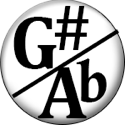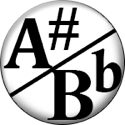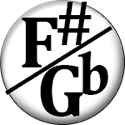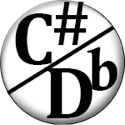Voice Leading I vi ii V with Triads
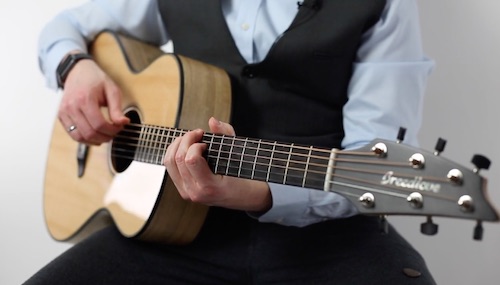
Voice leading with I vi ii V triads Hi, I'm Grey and this is Hub Guitar. We've talked about voice leading in previous lessons, from a more general perspective. This lesson will focus on how to take a specific chord progression, in this case, I vi ii V, and voice lead through it using triads. I'm going to show you how to do this using closed-position triads. That means they use three consecutive strings, and the total span of the chord is within an octave. I'm going to use the strings 654 to show you this, because that's one of the least useful places to play these arpeggios. You did hear that right. I want to show you how to play it in a less useful area, and let you figure out how to play it in more useful areas by yourself. In the key of C, our chord progression I vi ii V would be: C major, A minor, D minor and G. The specific note content is: C major has C, E and G; A minor has A, C, and E ... so there's two common tones there, C and E. To change a C major to A minor, you've just got to take the G and move it to A. Now the chord Aminor, consisting of A C and E will turn into D minor, consisting of D, F and A. Actually only one note in common now. We keep the A exactly where it is, and move the C up to D a whole step and the E up to F by a half-step. Now we've got a D minor chord, consisting of D F and A. And we're going to move that up to G major, which has G B and D. Again we have just one common tone, D. So we move our A up to B and our F up to G. Now with our G major in place, let's return to C major. Not so fast, though. Don't just jump back to the original chord shape. That's the old way of thinking. Let's voicelead this one too! G B and D become C E and G. One common tone. G remains where it is. D moves up by whole step to E, and B moves up by half step to C. It's really that half step motion that makes the G chord resolve so strongly to the C chord. And by ensuring that this half step resolves right here, within the same octave, on the same string, one half step, we can much better hear the meaning of the harmony and the motion within the chord. Notice that I'm actually on a different C chord than the one I started with. That's a common result of voice leading. You'll cycle through all possible chord shapes. Now I'm going to repeat that process, starting from the very beginning, until I end up on the same chord that I started with.
The “I vi ii V” progression is one of the most common chord progressions in modern music. How common? Let’s assume that it’s in the top ten, and that it can be heard in thousands of popular songs.
In this lesson, we’re going to use our closed-position triads to play through every possible way to execute this progression on guitar using closed triads.
Since there are 12 closed triads for each chord, that leaves 12 possibilities. We’ll explore the first four here, and you’ll do the rest on your own.
I-vi-ii-V on Bottom Three
C
A-
D-
G
C
A-
D-
G
C
A-
We ran out of space; let’s jump the next one down an octave.
D-
G
C
Back to where we started!
Key Exercises
- Time to apply it. Repeat the entire above exercise on your own, on string sets 543, 432, and 321. You’re the boss now.
- Spell those notes! Play the first chord. Spell the notes. Know what the notes are. Now, what are the notes in the next chord? Spell them! Visualize them! Move to the next chord using the least possible amount of movement.
 As the creator of Hub Guitar, Grey has compiled hundreds of guitar lessons, written several books, and filmed hundreds of video lessons. He teaches private lessons in his Boston studio, as well as via video chat through TakeLessons.
As the creator of Hub Guitar, Grey has compiled hundreds of guitar lessons, written several books, and filmed hundreds of video lessons. He teaches private lessons in his Boston studio, as well as via video chat through TakeLessons.




